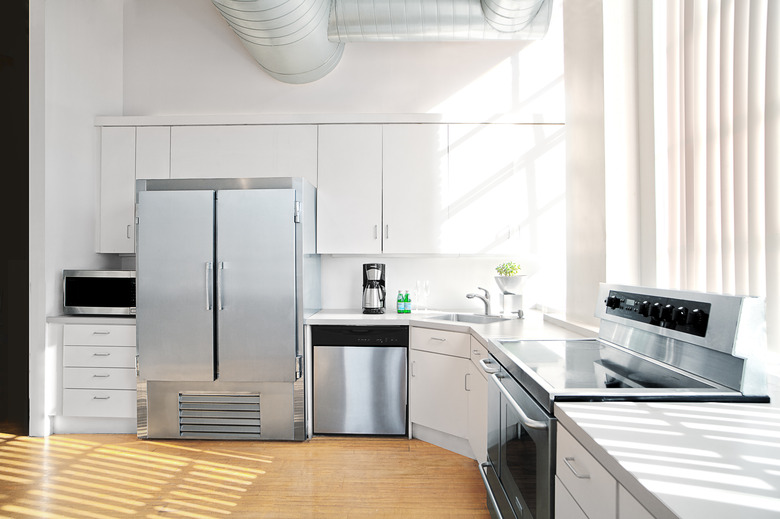Can A Refrigerator And Microwave Be On The Same Circuit?
If you're planning to remodel your kitchen and you apply for a permit, you'll need to familiarize yourself with the National Electric Code requirements for kitchen outlets to pass inspection. And it's good to note that they've changed since the early days of microwaves.
According to the 2020 version of the NEC, you can't power a microwave and refrigerator on the same circuit because each of these appliances requires a dedicated circuit, which is one shared by no other appliances or lights. Other kitchen appliances must also be on dedicated circuits, including the garbage disposal, dishwasher, freezer and electric range.
Refrigerator Electrical Requirements
Refrigerator Electrical Requirements
The changes to the electric code are a response to the increased power draw of modern appliances. A contemporary refrigerator may use significantly less power than one built in the 1970s, but when it starts up, it consumes three times the power it does when it's running, according to GE Appliances. If you plug a microwave, which typically draws 1,200 to 1,500 watts, into the refrigerator circuit, and the refrigerator cycles on while the microwave is running, there's a good chance of a blown breaker.
To prevent this, the NEC requires the refrigerator to be plugged into its own 120-volt, 20-amp circuit. The circuit must have AFCI (arc-fault circuit interrupting) protection, and GFCI (ground-fault circuit interrupting) protection is also required if the plug is within 6 feet of a sink or in the garage or basement. You can provide both with a single outlet or by installing an AFCI/GFCI breaker.
Microwave Circuit Requirements
Microwave Circuit Requirements
Over the range microwave wiring requirements are similar to those for a refrigerator. The microwave must plug into a 20-amp dedicated circuit, and the circuit requires AFCI protection. You generally don't have to worry about GFCI protection because the outlet is usually hidden behind the appliance and is protected from moisture. You can install an AFCI outlet, but the preferred method is to install an AFCI breaker in the panel.
The dedicated circuit for a microwave cost, or the cost for that of a refrigerator, is about the same as it is for any other circuit. Because the NEC requires more outlets in the kitchen than it did previously, your kitchen remodel may have to include a panel upgrade.
Putting a Microwave and Coffee Maker on the Same Circuit
Putting a Microwave and Coffee Maker on the Same Circuit
If you have an older house, the kitchen probably doesn't have enough receptacles to accommodate all your appliances. Because it draws so much power when it starts up, the refrigerator should still be on its own circuit. If you have a portable microwave, you may be wondering whether it's safe to plug it and another appliance, such as a coffee maker, into the same outlet.
You can determine this by checking the power consumption of the microwave and the appliance in question, which you'll find on a label on the back or underside of each one. If the combined current draw exceeds 15 amps but is less then 20 amps, you can safely plug them into a 20-amp outlet. If the power draw is greater than this, plugging them into the same outlet will probably result in a blown breaker.
